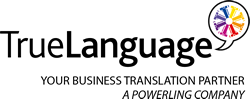When you’re thinking of translating your organization’s materials into one or more foreign languages, what’s typically top-of-mind is the quality of translation service to be provided. You’ll want a language-service provider who you can trust to assign qualified and experienced professional linguists to work on your materials. Still, it’s not enough to have great translators at your fingertips. You’ll also need professionals who are skilled at confronting the formatting challenges posed by inevitable text expansion and contraction in translation.

But are they native speakers of the languages you’re translating into? And just how well will the translated text fit into the original format? Because translated text is very likely to be considerably longer or shorter than the original English. (For more details, download our Text Expansion & Contraction Percentages for Translation chart below.)
In these situations, the typesetter will need to make significant adjustments to the original layout so that everything fits properly. Some common contexts for text expansion and contraction include localizing apps, recording video voice-overs, and generating subtitles, to name a few.
Will your internal staff know where the line breaks should go in these foreign languages? Will they spot all formatting errors in text they don’t understand? In short, how prepared are they for the inevitable expansion and contraction of text that occurs when translation takes place?
Fortunately, there is a solution. TrueLanguage has formatting experts who are native speakers of the languages into which your materials are translated. So, when your original text expands or contracts through the translation process, we’ll make it fit flawlessly in the original format for you – so well, in fact, that it will seem as if the document was originally created in the foreign language rather than in English.
Get the Download
Complete the form below to download the Text Expansion & Contraction Percentages for Translation chart.

